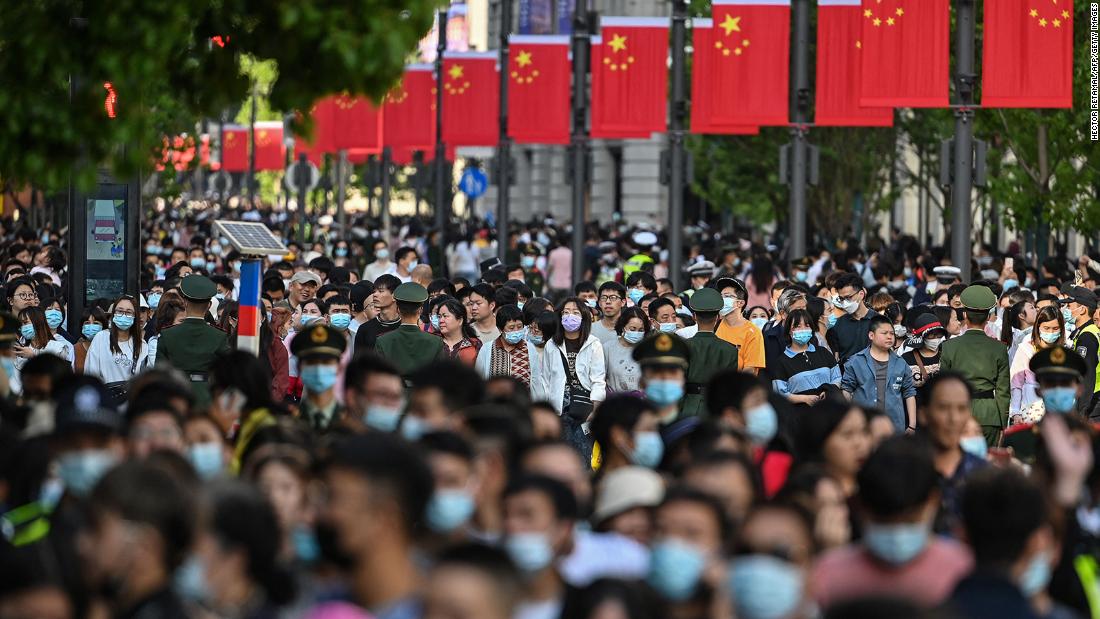
According to China's National Bureau of Statistics, the population rose by 5.38% over the past decade — or 72 million people — to 1.41 billion people.
The latest data represents an average annual population growth rate of 0.53%, which was 0.04% lower than the annual growth rate reported between 2000 and 2010. It's the slowest growth rate for China since at least the 1960s.
The figures also raise the prospect of a demographic crisis for the world's most populous nation, with a falling birth rate and rapidly aging work force threatening to curtail its rapid economic growth.
National Bureau of Statistics head Ning Jizhe said the falling growth rate was a result of couples putting off having children longer and the rising costs of raising a family. Ning said the number of women at child-bearing age was also declining.
"In the future, at some time, China's population will peak some day but there are still uncertainties. For some time to come, China's total population will be kept at above 1.4 billion," he said, adding China would have an "abundant labor force ... for some time to come."
One-child policy reversal
China launched its seventh national census on November 1 last year, sending 7 million workers to count its massive population amid a global pandemic.
In recent years, the Chinese government has battled to reverse declining population growth as it faces the reality of fewer workers supporting an increasingly aging society.
China's slowing population growth is partially a result of its one-child policy, which was introduced in 1979 and for more than 35 years limited couples to only one child.
Three years after the policy was enacted, China's third national census reported average annual population growth of 2.1% over the past 18 years, with the population nearly doubling between 1964 and 1982.
The government said in 2015 it would change the one-child policy to allow up to two children, but China's birth rate has struggled to recover.
The 2020 census, the first since the policy's removal, showed a slight rise in the proportion of citizens aged below 14 — from 16.6% in 2010 to 17.95% in 2020 — but not enough to reverse the overall trend of an aging population with a slowing growth rate.
The data also shows the number of newborns registered in China in 2020 dropped by almost 15% year-on-year, from 11.79 million in 2019 to 10.03 million.
Yong Cai, Professor of Sociology at the University of North Carolina said China was changing from a "high fertility, high mortality" country to a "low fertility, low mortality" combination. "The Chinese government is very aware of that and society is, you know, aware of that and the structural adjustment is ongoing," he said.
'Major headwind' to China's economy
As a result of the falling birth rate, China's work force is aging, and the government is worried the changing demographics could lead to rising pension costs and falling economic growth.
The 2020 census data showed the proportion of the population aged over 65 rose rapidly, from 8.87% in 2010 to 13.5% in 2020.
Cai said the rise of the elderly population was a "major headwind" for the Chinese economy. "[But] China is not alone in this. You know most of even middle-income countries are in this category. The entire world is now getting into the reality that we are all aging together," he said.
The Chinese government has discussed raising the retirement age to deal with the aging workforce — currently men retire at 60, while women can stop working at 55 for white collar employees and 50 for laborers.
Despite the slowing population growth, Stuart Gietel-Basten, professor of social science and public policy at Hong Kong University of Science and Technology, said there were a number of positives from the 2020 census data for China.
"The sex ratio at birth looks to have come down quite a lot, which means that the sex-selection abortion against girls looks to be down. Illiteracy rates are going down, the number of people with university education has gone up very sharply," he said.
"It's less important when [China] clicks over to population decline, what's more important is how much population adapts to an era of no growth."
https://ift.tt/3uEYExL
World
Bagikan Berita Ini














0 Response to "China has recorded its slowest population growth in decades, new census reveals - CNN"
Post a Comment